TCL C7K vs C8K: Which Mini LED TV offers the best value?
TCL’s 2025 range was one of their most consistent yet. But which model should you buy?
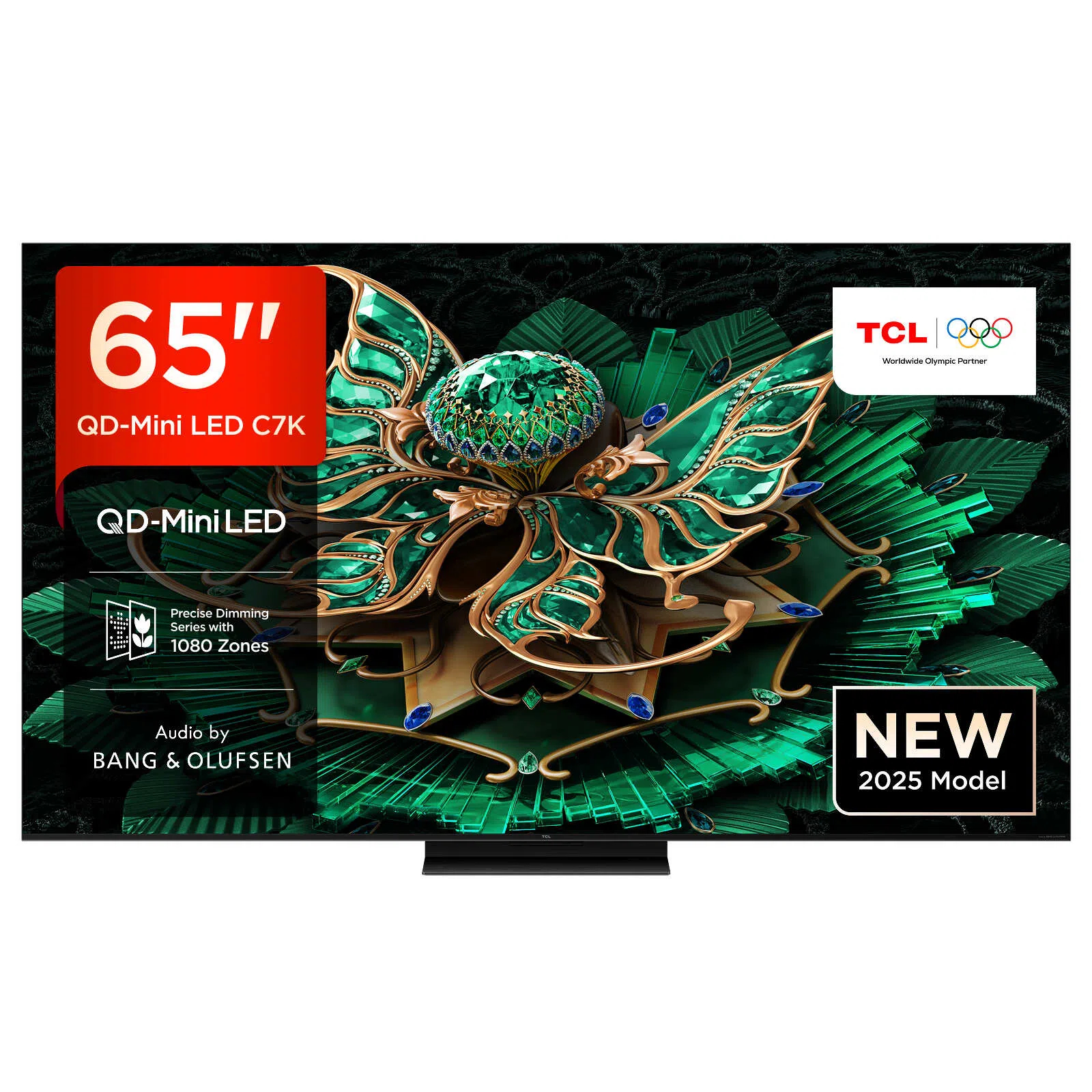
Screen size 65 inches (also available in 50, 55, 75, 85, 98 and 115 inches)
Type Quantum Dot LCD
Backlight Mini LED (1008 dimming zones)
Resolution 4K
HDR formats HLG, HDR10, HDR10+, Dolby Vision
Operating system Google TV
HDMI inputs x 4 (x 2 48Gbps HDMI 2.1)
Gaming features 4K/144Hz, 4K/120Hz, VRR, ALLM, Dolby Vision game mode
Input lag 13.2ms at 60Hz
ARC/eARC eARC
Optical output? Yes
Dimensions (hwd, without stand) 83 x 144 x 5.6cm
Super-aggressive pricing, much-improved Mini LED backlighting and expansive Quantum Dot colour make the C7K the standout of TCL’s 2025 range.
Pros
- Excellent value
- Slimmer design
- Overloaded with features for the price
Cons
- Sound staging can lose coherence
- Lacks some of the C8K’s display features

Screen size 65 inches (also available in 75, 85 and 98 inches)
Type Quantum Dot LCD
Backlight Mini LED (1680 dimming zones)
Resolution 4K
HDR formats HLG, HDR10, HDR10+, Dolby Vision
Operating system Google TV
HDMI inputs x 4 (x 2 48Gbps HDMI 2.1)
Gaming features 4K/144Hz, 4K/120Hz, VRR, ALLM, Dolby Vision game mode
Input lag 13.1ms at 60Hz
ARC/eARC eARC
Optical output? Yes
Dimensions (hwd, without stand) 83 x 145 x 5.9cm
The C8K’s winning blend of extreme brightness, outstanding backlight control and aggressive pricing makes it one of TCL’s most exciting TVs yet.
Pros
- Excellent brightness
- Great backlight control and colour
- Better sound of the two
Cons
- Strong competition at this price
- Colours look a tad washed out in Standard mode.
After some inconsistency that saw only the occasional amazing TV, TCL burst into 2025 all guns blazing with a string of impressive sets across all budgets and sizes.
This is, of course, excellent news for us AV enthusiasts, with much excitement in the testing room as we had several great Mini LED TVs with high refresh rates, comprehensive HDR support and new ‘Halo Control Technology’.
This does, however, make choosing the right TV all the harder. The TCL C7K is a What Hi-Fi? Award-winner, but how well does it stack up against its more premium sibling? We put the 65-inch models of both the C7K and C8K – two five-star Mini LED TVs – against each other to see which one comes out on top.
A quick note on model numbers before we get started: in the US, the C7K is known as the QM7K, while the C8K is the QM8K.
TCL C7K vs C8K: price

The 65-inch TCL C7K launched at an already good value price of £1399 / $1500 / AU$2295. The more premium 65-inch C8K, on the other hand, launched a tad higher, at £1599 / $1600 / AU$2999.
However, both can now be found with some significant discounts. The TCL C7K has been spotted as low as £749, while the C8K has been on sale for £1149. Both of these prices offer pretty incredible value for the money, and it’s encouraging to see such discounts so soon after launch.
The C8K, as you might have noticed, has not had quite as significant a discount as the C7K, and even on sale, is at a similar price to stiff competition such as Sony’s 65-inch Bravia 7 and LG’s 65QNED93.
The latest hi-fi, home cinema and tech news, reviews, buying advice and deals, direct to your inbox.
The C7K is utterly exceptional value at this point, though, massively undercutting the competition, so this round has to go to the cheaper model.
** Winner: TCL C7K**
TCL C7K vs C8K: design
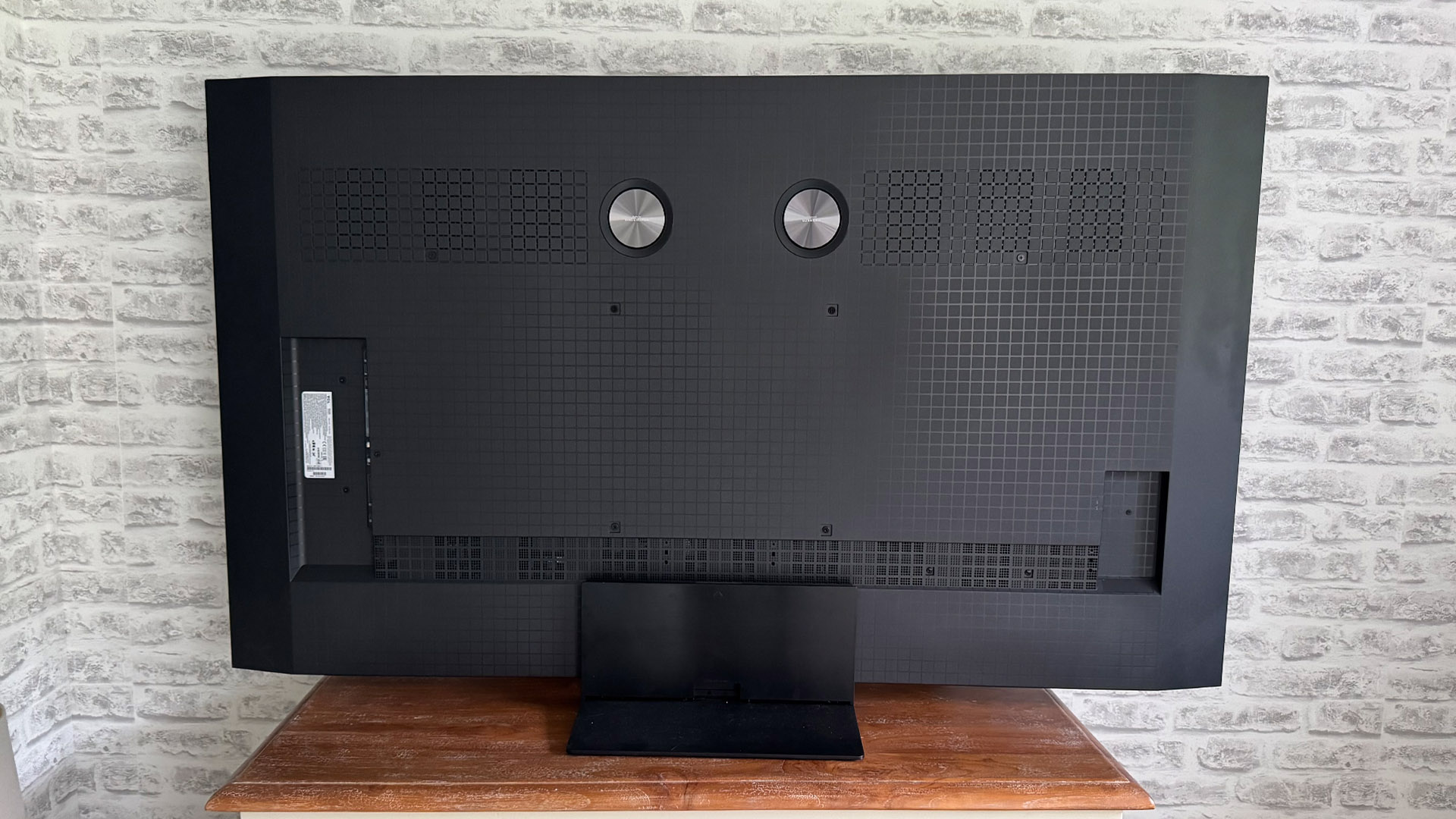
The TCL C7K and C8K share a similar design, including the same central desktop mounting plate.
The main difference is the metal finish, with the C8K enjoying a premium silver metal finish (aerospace-grade aluminium alloy, to be precise).
The C7K’s back section protrudes slightly, while the C8K has near-uniform flatness (likely to make room for the more premium direct backlighting system). Both are rather thick TVs, at 5.6cm for the C7K and 5.9cm for the C8K.
The C8K boasts a more premium silver metal-finished remote control, if that’s important to you – though the C7K’s plastic remote at least gives a premium feel with a metal-style finish.
** Winner: TCL C7K**
TCL C7K vs C8K: features
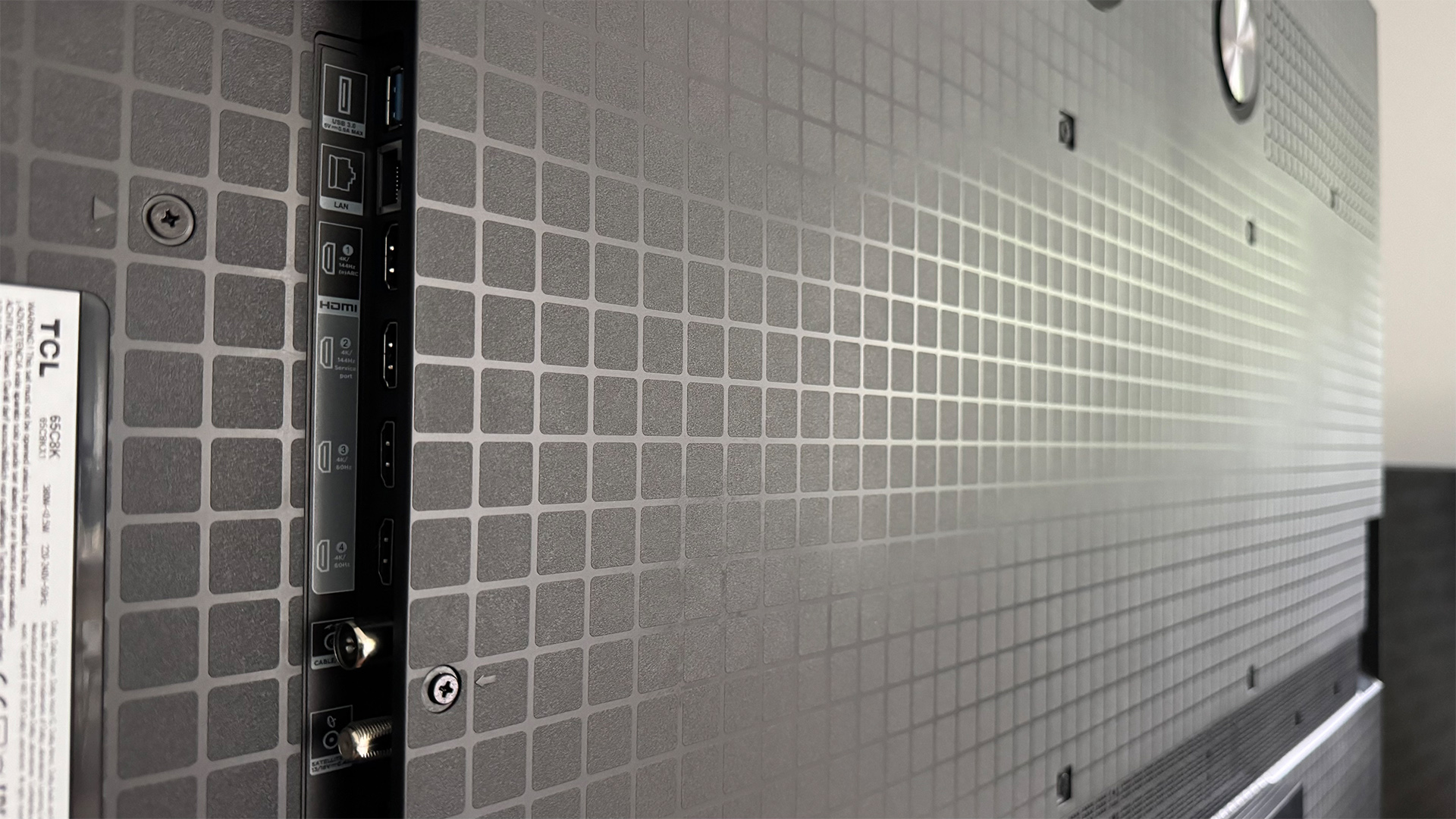
When it comes to features, the TCL C7K and C8K have an awful lot in common.
Both sport a Mini LED screen, which utilises tiny LED backlights to improve contrast and brightness compared to average LCD screens.
Both also feature a comprehensive suite of hardware and software technology called ‘Halo Control’, which is designed to allow TCL to push brightness while simultaneously improving both the depth and the consistency of blacks. In particular, the technology aims to address the problematic halos of light around bright objects on dark backgrounds.
Connections are identical across the board, including four HDMI ports, a USB port, an optical digital audio output, an ethernet port and the now obligatory wi-fi and Bluetooth (v5.4) wireless connections.
However, gamers should note that on both models, only two of the four HDMI ports are full-fat HDMI 2.1 connections for high frame-rate gaming. A shame, as both TVs can support 4K at up to 144Hz – and even stretch to 288Hz in HD resolution (if you can find any 288Hz sources!). Note that current-gen consoles currently max out at 4K/120Hz, so anything above that is only relevant to hardcore PC gaming.
VRR is supported on both TVs right up to that extreme 288Hz level, including in the AMD FreeSync Premium Pro format. ALLM, which automatically switches the TV to its fast-response game mode when a gaming signal is detected, is also on board. We measured an imperceptible difference of 0.1ms between the input lag of the two TVs, with the C8K clocking the faster time of 13.1ms.
Both TVs also offer the full range of streaming services available through Google TV, including UK catch-up services such as BBC iPlayer, ITVX, Channel 4 and My5, as well as international heavy hitters including Netflix, Amazon Prime Video, Disney+ and YouTube.
Both also support all four HDR formats – HDR10, HLG, Dolby Vision and HDR10+.
So what are the differences? As you would expect, given its lower price, the TCL C7K has a few downgrades compared with the C8K. Most notably, the C7K has fewer dimming zones (1008 compared to the C8K’s 1680) and lower peak brightness (a claimed 2600 nits vs the C8K’s 4500).
This improved brightness should result in a more impactful picture from the C8K, particularly with HDR content. It should also enhance performance in bright rooms. The higher number of dimming zones should also mean finer control over the backlight, allowing the C8K to dim some areas of its light while keeping others more effectively bright, and improving overall contrast.
The C7K has a CrystGlow HVA Panel, whereas the C8K boasts TCL’s newer CrystGlow WHVA panel. The WHVA claims a few notable improvements over the older panel technology, such as a lower reflection film, a 40 per cent wider viewing angle and an ultra-slim ‘ZeroBorder’ frame.
Both the C7K and C8K are jam-packed with features, including lots of fancy new screen and processing technology. The C8K, however, comes with all the features of the C7K and more – so this round goes to the C8K.
** Winner: TCL C8K**
TCL C7K vs C8K: picture
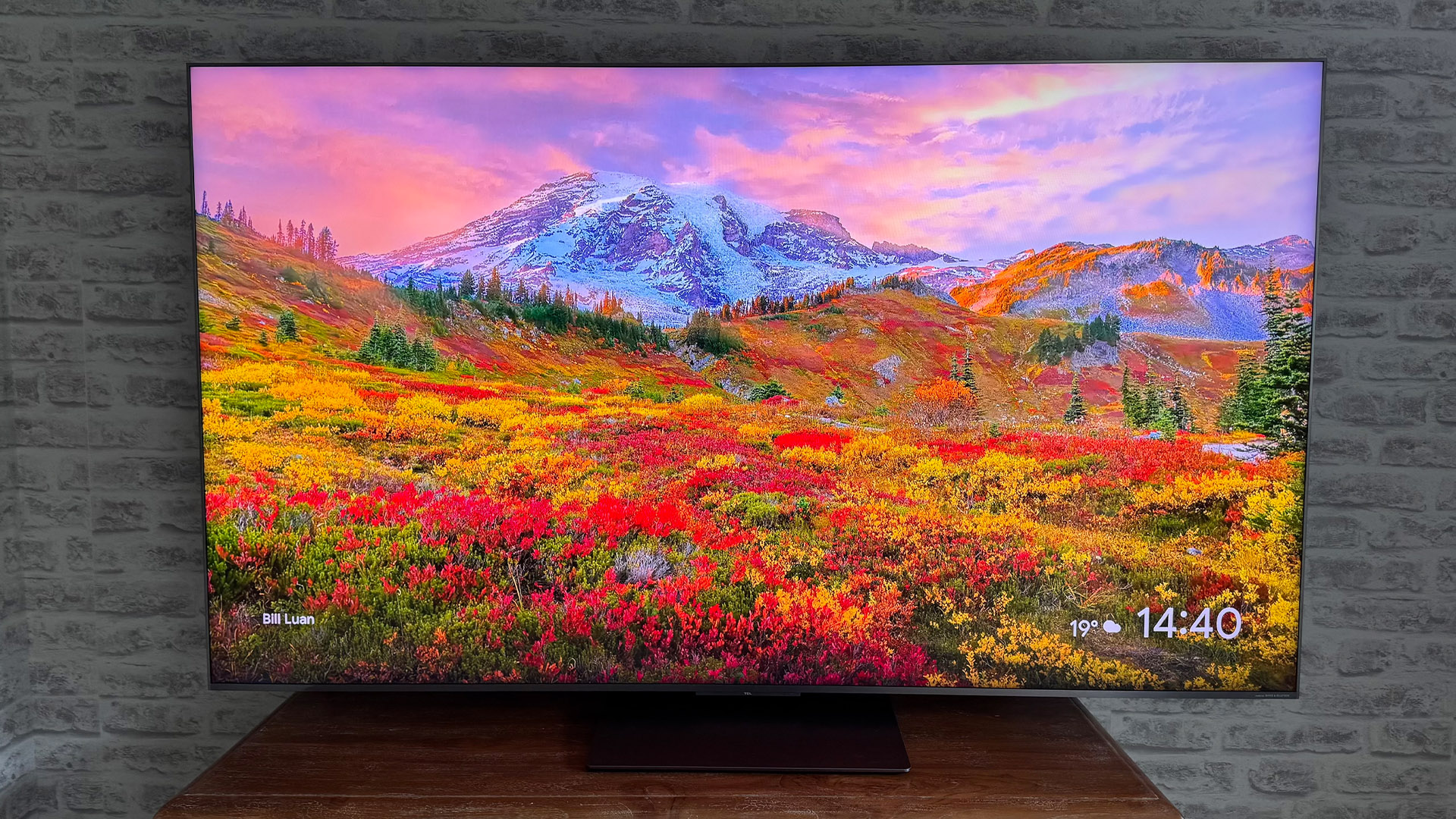
As you would expect from two TVs from the same range, the TCL C7K and C8K have a lot in common.
For starters, the much-hyped Halo Control Technology really delivers when it comes to contrast on both sets. This is particularly noticeable with simultaneous light and dark extremes, with bright objects showing up well against dark backgrounds without distracting light halos or heavy dimming.
In our side-by-side tests of the C7K and C8K, however, the differences become more apparent. Colours look richer and more rounded on the C7K’s Standard preset than they do on the C8K, where they are a touch washed out in the brighter areas. However, in the Movie and Filmmaker Modes presets, the C8K has the more effective colours.
However, this is likely because the C8K is a fair bit brighter than the C7K. The C7K is impressively bright, looking at least twice as bright in certain shots as even the best new OLED TVs. But the C8K’s extreme brightness is notable right from the outset, making for some of the most flat-out impactful HDR images we’ve seen. Most impressive of all is that this extreme brightness doesn’t come at the cost of shading, with tonal subtleties present even in the brightest images.
The C7K fares slightly better with shadow detail reproduction, however, against the overly punchy C8K.
Both the C7K and the C8K struggle slightly with wide aspect ratio films – the C7K has a yellowish colour creep in the top black bar, while the C8K has (very faint) instances of blooming in the bars when next to a bright object. There are issues with dark areas, too, with the C7K revealing faint traces of noise.
We’ve had to try hard to find these negatives, though, as the C7K and C8K are two of the best-performing LCD TVs we’ve seen, especially at this level.
Ultimately, and perhaps surprisingly, we’re giving this round to the C7K. While the C8K has that dazzling brightness and therefore even greater contrast, the C7K is as bright and contrasty as anyone is likely to need, and it feels even better balanced and more natural overall.
** Winner: TCL C7K**
TCL C7K vs C8K: sound

While both TVs feature sound systems by Bang & Olufsen, they’re not identical, and this difference is evident in their audio performance.
Both deliver well in the midrange, offering an open and dynamic sound that provides plenty of room for film soundtracks to flow.
However, the lack of a dedicated bass driver means that low frequencies are not delivered as enthusiastically as the higher frequencies on both models. This results in a treble-heavy presentation where high-pitched sound effects come across too brightly, while bass is delivered a bit too politely.
This problem is exacerbated on the C7K. Playing dense soundtrack moments, such as the opening of Blade Runner 2049, results in more swallowed and condensed sound than the C8K, as well as a chuffing and buzzing interference in long bass sections that the C8K typically avoids.
We suggest you partner these TVs with a dedicated soundbar or surround system, but both models offer good built-in sound for the price. The TCL C8K is a tad better, however, so it takes the win this round.
** Winner: TCL C8K**
TCL C7K vs C8K: verdict
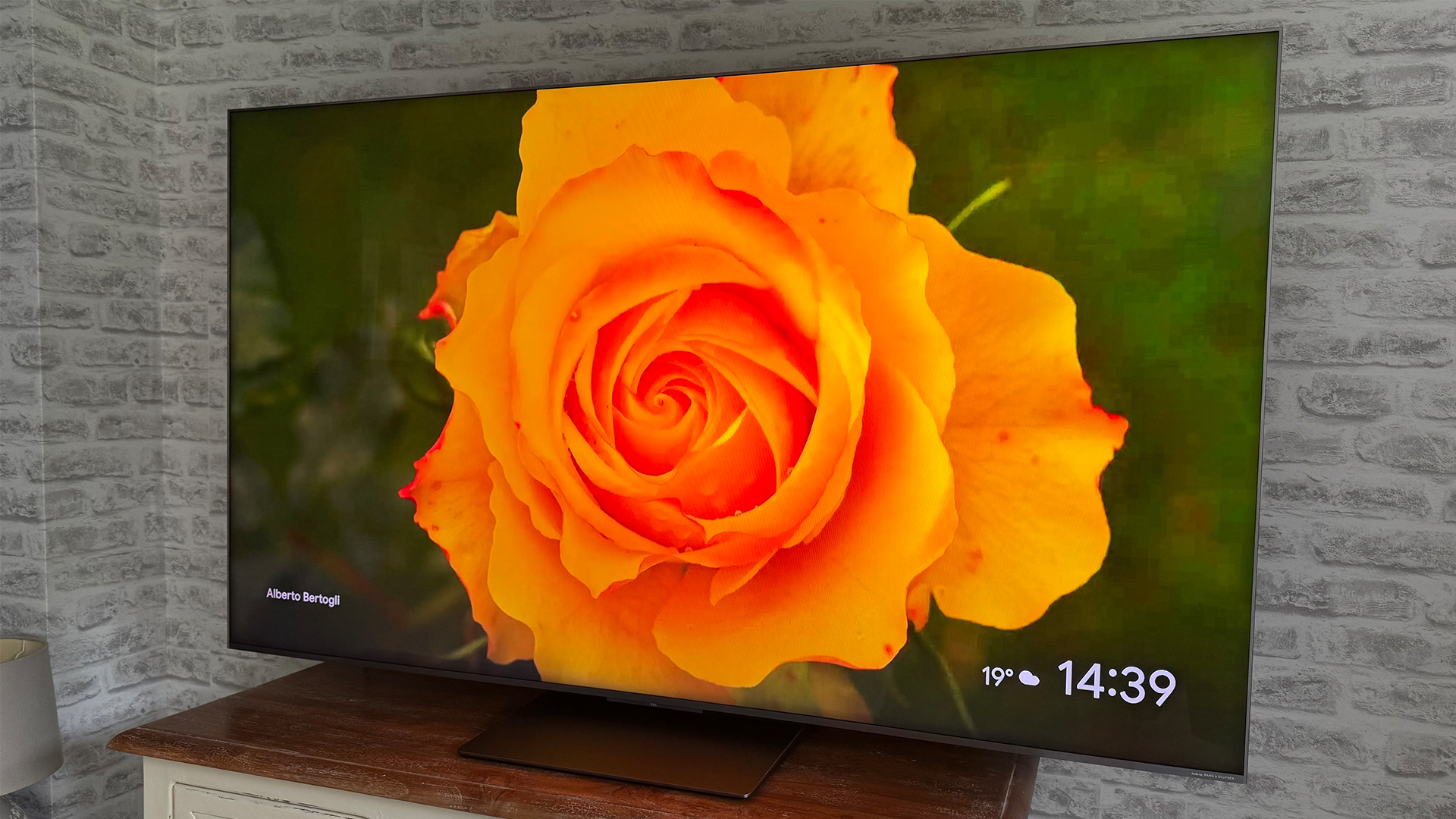
The TCL C7K and C8K are both excellent five-star TVs, and purchasing either model is sure to make for a delighted new owner.
Being from the same range, they have a lot in common, including rich gaming support, a stacked Google TV OS, all-encompassing HDR support and TCL’s innovative new Halo Control Technology.
The C8K, as the more premium model, offers a few more bells and whistles, including a more robust sound system, beefier screen specs and a brighter picture that still retains impressive lighting control.
Interestingly, though, while the C8K is undeniably more spectacular than the C7K, there’s a feeling that it occasionally pushes things a little too far, particularly in very high brightness situations.
The C7K, on the other hand, is more consistently natural in its picture performance. It’s also plenty bright enough for practically all of the HDR content that’s currently available, and for sunlit living rooms.
Given that it’s also so much cheaper than the C8K – and all of its significant non-TCL rivals, for that matter – it’s the C7K that we recommend. That’s why it’s a What Hi-Fi? Award winner.
** Overall winner: TCL C7K **
MORE
Read our TCL C7K review
Mini LED vs OLED: which screen technology is better?
Read our TCL C8K review

Daniel Furn is a staff writer at What Hi-Fi? focused on all things deal-related. He studied Magazine Journalism at the University of Sheffield before working as a freelance journalist covering film, TV, gaming, and consumer tech. Outside of work, he can be found travelling far-flung corners of the globe, playing badminton, and watching the latest streaming sensation (in 4K HDR, of course).
You must confirm your public display name before commenting
Please logout and then login again, you will then be prompted to enter your display name.
